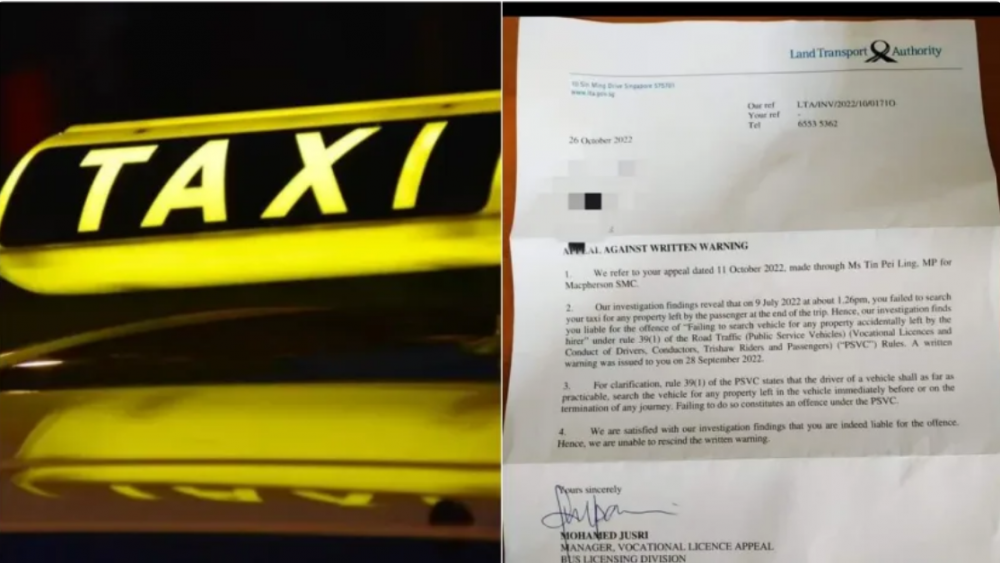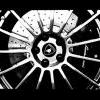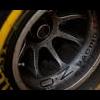Search the Community
Showing results for tags 'land transport authority'.
-

Daring PMD riders go 80km/h in MCE, drivers enraged at lack of action
Fadevfast posted a blog entry in MyAutoBlog
If PMD can travel at 80km/h, why is my grab order so slow to travel? What happened? The footage shows the PMDs going much faster than the camcar while Chinese music blares in the background. While the MCE is fairly empty at the time of recording, it does not change the fact that using a PMD on the expressway is illegal and unsafe in the event of an accident. If caught, first-time offenders face a fine of up to S$2,000 or up to three months in jail, or both. Repeat offenders face a fine up to S$5,000 or up to six months behind bars, or both. With road users in cars and motorcycles needing to pay road tax, COE and other fees to be allowed to use their vehicles on the road, it's no surprise that incidents sich as this frustrate them, especially with how few of them go unpunished. Online chatter Some wondered if LTA had working hours, as in this incident they were nowhere to be seen. Others just complained about how such cases are now commonplace, despite the danger they represent to other road users. ========= Be the first to get the latest road/ COE news and get first dibs on exclusive promos and giveaways in our Telegram SGCM Community. Join us today!-
- lta
- land transport authority
-
(and 6 more)
Tagged with:
-
https://www.channelnewsasia.com/taxi-driver-given-warning-lta-after-failing-search-vehicle-personal-items-left-passenger-3060091 SINGAPORE: The Land Transport Authority (LTA) has agreed to review a rule where taxi drivers are required to search their vehicle for any items left behind by the passengers after a trip. The National Taxi Association (NTA) and National Private Hire Vehicles Association (NPHVA) had reached out to LTA for an explanation and clarification after one taxi driver received a written warning by LTA for "having failed to search the vehicle for any property accidentally left behind by the hirer", said Yeo Wan Ling, Director of NTUC U SME and U Women and Family in a Facebook post on Friday (Nov 11). Ms Yeo, who is also adviser to NTA and NPHVA, added that the associations reached out to LTA after drivers gave feedback and expressed concerns about the incident. "Like our taxi and (private-hire vehicle) driving community, the NTA and NPHVA are concerned about the warning received by the driver and we reached out to the LTA for an explanation and clarifications on behalf of our P2P community," she said. LTA clarified that this is a long-standing rule and serves as a good practice on the part of the driver, she added. WARNING LETTER WITHDRAWN LTA has decided to withdraw the warning letter to the taxi driver and shared that its intent was to "remind the driver on such good practices", said Ms Yeo. An earlier Facebook post made by user Ong Boon showed a letter from LTA dated Oct 26 stating that the driver had made an appeal against the warning to the transport authority through Member of Parliament Tin Pei Ling on Oct 11. According to the letter, an investigation by LTA showed that on Jul 9 at about 1.26pm, the driver had failed to search his taxi for any items left by the passenger after the trip. "Hence, our investigation finds you liable for the offence of 'Failing to search vehicle for any property accidentally left by the hirer' under rule 39(1) of the (Road Traffic Rules)," the letter stated. Ms Tin, who is MP for Macpherson, said in a Facebook post on Friday that she had made two appeals on behalf of Mr Ong, who was also a resident of her constituency. "Along with my second appeal days ago, I separately asked LTA based on what did they conclude that my resident didn’t search the vehicle," she said. Rule 39(1) of the Road Traffic (Public Service Vehicles) (Vocational Licences and Conduct of Drivers, Conductors, Trishaw Riders and Passengers) states that immediately or before the end of the journey, the driver of a vehicle should search his vehicle for any property left behind. The letter also noted that a written warning was issued to the driver on Sep 28. It stated that LTA was "satisfied" with the investigation findings that the driver was liable for the offence and was hence unable to rescind the warning. NO DRIVERS PROSECUTED Ms Yeo's post also said that LTA has never prosecuted any driver for such breaches. "Going forward, the LTA agreed to review the continued relevance of this rule together with stakeholders." The Associations and the National Trades Union Congress believe that the safety of our drivers must be a top priority, she said, adding that the drivers' work conditions often do not allow them to "search for items accidentally left behind by hirers" safety and effectively. "While it is a good practice to have, it should not be an obligation that attracts penalties. "We thank the LTA for withdrawing the letter of warning to our driver and will continue to work together with the LTA and other stakeholders to support our drivers." Ms Tin said she is glad that LTA has acceded to her appeal and will be withdrawing the warning to Mr Ong. "I appreciate LTA’s willingness to review the matter and thank NTUC & the Associations for championing this as well."
- 45 replies
-
- 3
-

-
.png)
-
- lta
- land transport authority
-
(and 1 more)
Tagged with:
-
Read a coverage in which LTA was singled out as one of the "problematic" statutory boards... I'm sure many of us have our gripes with LTA but to be singled out by an Associate Professor takes this to another level, it isn't just about disgruntled road users. Dr Lai seemed to highlight several examples, all directly linked to misgivings with LTA. Over the years, I think LTA has really shown that it is one of the slowest and laidback statutory board with a questionable track record. 1. Failure to kick SMRT on its butt earlier on until massive problems arose in public train system 2. Slow response to personal mobility devices after countless incidences 3. Almost at a loss what to do with the legal framework when ride-haling technology came into the picture 4. Refused to acknowledge the flaws in COE system while yet continuing to shout control of vehicle populations I don't know, there may be others you guys wanna add on.
- 127 replies
-
- 6
-

-

-
- singapore
- ministry of transport
-
(and 2 more)
Tagged with:
-
There will be 42 per cent more Certificates of Entitlement (COEs) for cars for the May to July quota, the Land Transport Authority announced on Friday. Buyers and sellers of cars up to 1,600cc and 130bhp will get 1,011 COEs per month - 41 per cent more than what is currently available to them. COEs for cars above 1,600cc or 130bhp will have 966 certificates - 38 per cent more. And there will be a 53 per cent rise in the number of 586 Open COEs available per month. These COEs can be used for any vehicle type, but ends up mainly for bigger cars. The supply of COEs for commercial vehicles will also expand by 47 per cent to 770 certificates a month. Motorcycle COE supply is the only one that will shrink. There will be 686 pieces up for grabs per month - 4.6 per cent fewer than now. On the whole, the monthly supply rises 32 per cent to 4,019. Motor traders expect this to ease pressure on premiums but do not think prices will fall by more than 10 per cent. This is because there is a significant amount of pent-up demand from motorists who have been holding off renewing their vehicles on the back of high premiums in the recent years.
-

Combined. The Traffic Police, Land Authority and National Enviroment Agency
SGCM_editorial posted a blog entry in MyAutoBlog
Too bad that a proposal to merge the Traffic Police (TP) with the Land Transport Authority (LTA) never materialised. The plan, made about 10 years ago, was scuttled at the eleventh hour – for reasons that are still unknown. Imagine the efficiency and scope that such a merged entity would have had on enforcement efforts. Today, both bodies are strapped for manpower and struggling to cope with Singapore’s rising vehicle population, often having to outsource various enforcement tasks to external parties. Despite the best efforts of the TP and the LTA, errant motorists still get away with parking and moving violations. The former ranks as the top complaint received by the LTA, which shows that much more can be done in the area. And the latter is becoming an increasingly worrying trend, highlighted by a number of tragic accidents in recent months. Even if the statistics do not show any spike in serious traffic accidents, any motorist will agree that a number of dangerous driving behaviours are a common sight these days. One is the usage of mobile devices while driving. Despite the harsh penalties that such offences attract, many drivers are texting or putting a mobile phone to their ear while on the move. Running a red light has also become more common now. Stand at any junction not equipped with red-light cameras and you will see vehicles proceeding even well after the lights have turned red. It is strange that the authorities have not relied more on technology to clamp down on this dangerous practice. With the latest surveillance systems, images of violators can be processed at one centralised backroom – unlike the older versions, which required manual on-site downloads to be done periodically. Today’s systems are also fairly cost-efficient, from acquisition to operation. But back to a merger between the TP and the LTA. Such a move would have created a “multiplied” force of officers that can act against a wider variety of offences as they happen on the road. Currently, the division of duties allows many culprits to continue their wayward ways with impunity. To address other frustrating on road trends (see sidebar), the vehicular enforcement department of the National Environment Agency (NEA) should also be part of the same equation. Together with the TP and the LTA, the NEA can issue summonses to motorists who throw litter from their vehicles, as well as those who drive smoke-belching vehicles. Smokers form a big group of litterbugs-on wheels. Whenever you see someone dangling a cigarette out the car window, you can almost be certain that he or she would fling it nonchalantly out once it is spent. Other items often flung out of moving vehicles include plastic bags, pieces of used tissue paper, junk mail and flyers, drink cans, and even empty styrofoam food carriers. Despite mandatory vehicle inspection, smoky tailpipes are still spotted everywhere. They belong almost exclusively to diesel vehicles such as taxis, buses and trucks. Torque understands that many of their operators fi ll up with bootleg diesel – cheaper fuel bought from ships anchored around Singapore. Often, the diesel does not meet the Euro 4 emission standard that authorised fuel retailers have to follow. And when it is time for these “dirty” vehicles to be sent for their compulsory check-ups, the operators simply fill them up once with biodiesel. This, it seems, is sufficient to ensure their emissions meet regulatory standards at the point of inspection. So, the solution is to nab offenders on the go. And the only way to do this properly is to have a sizeable force of enforcement officers – such as one created by a tripartite merger between the TP, the LTA and the NEA. Those opposed to such an alliance would say the three agencies already work quite well together despite being separate entities. Even if that is true, there is no harm in them working even more closely. And the issue is not so much about the level of cooperation, but the increased effectiveness an enlarged enforcement agency can bring. If a full-blown merger is too much to manage (as the scuttled union between the TP and the LTA seems to suggest), a permanent joint venture between the enforcement departments of the three agencies should be considered. Because, as it is today, three departments working separately is clearly inefficient. If you disagree, take note the next time you are on the road. See how many journeys you can complete without spotting someone littering from a vehicle, using a handphone (sans handsfree device) while driving, at the wheel of a smoke-belching vehicle, driving carelessly (e.g. running the lights, tailgating, not giving way, and road hogging), or a vehicle with tinted windows so dark, you cannot see through them. If you cannot spot any of the above, chances are that you yourself are too distracted for your own good. This article was written by Christopher Tan, consulting editor for Torque.- 4 comments
-
- traffic police
- lta
- (and 4 more)
-
Even though most of the infrastructure plans outlined in the latest Land Transport Masterplan were announced in the run-up to the Punggol by-election in January, the document is admirable for the way it maps out methodically what Singapore needs to do to keep its population moving up to 2030. But a masterplan requires more than just hardware. It needs to spell out more qualitative targets, rather than focus on quantitative ones such as the length of rail network and number of buses. It needs to get to the crux of what leaves commuters satisfied: service quality. While the plan spells out issues such as service frequency and reliability, as well as walking distance to and from a train station or bus stop, the proof of the pudding goes beyond that. There is a need to look at how crowded it can get, the quality of air-conditioning, train speed (which has been patchy of late), station dwell time, dependability of services such as lifts and escalators, and even noise level on trains. The plan needs to deliver that lofty promise touted famously by a leading airline - "making sure you arrive in the best possible shape" - if public transport is to have any chance at all competing against the car. Here, the goal is to make public transport a choice mode, rather than a mode of no choice. To do that, there needs to be a slight shift away from an engineering-centric way of meeting an objective and measuring how successful we have been doing so. But that does not mean diminishing the importance of engineering. In that respect, the quality of infrastructure needs to be nailed down, since this will eventually determine its reliability and longevity. In light of recent rail breakdowns, it appears that there are still struggles with water leakage in tunnels - an issue faced by builders since the Central Expressway opened more than 20 years ago, despite improvements in construction material and technology. These leaks appear to be the root cause of many MRT incidents, including at least two tunnel fires and tracks that corroded barely three years after a new line was opened. If leaks are indeed unavoidable - as claimed by the Land Transport Authority - then it must be made sure that water is channelled safely away from all operating parts such as rails and cables. And if such parts cannot be placed out of the path of water, then at least ensure that they are water-resistant. There is little point stating that Singapore's infrastructure specifications meet international standards - each geographical region poses its own set of challenges. So engineers here should specify standards that are suitable for local conditions - just as car makers 'tropicalise' models meant for hot and humid markets. It is true that it is the responsibility of operators to ensure operating assets are well-maintained and flaws are fixed quickly. But that responsibility becomes much more onerous if an infrastructure is prone to one form of failure or another in the first place. Singapore pays top dollar for its infrastructure. So it is reasonable to expect a high level of robustness. Another area that needs overhauling is a transport framework that suffers from the tension arising from profit-oriented operators providing a public service. It is now clear that publicly listed operators face opposing values of satisfying shareholders and commuters. While it is in their commercial interest to keep operating assets in good running order, they may be tempted to delay repairs and upgrades for as long as possible. Or do the barest minimum. 'Softer' measures of service quality, such as crowdedness or efficiency of air-conditioning, matter even less. So Singapore needs to move swiftly to a regime where the Government takes ownership of all operating and fixed assets, and, preferably, assumes revenue risk. The operator would then be tasked with focusing solely on meeting a clearly laid out set of service standards - without worrying about the bottom line, because their profit margins would already have been fixed. An effective carrot-and-stick regulatory system will then ensure that the welfare of commuters is prioritised. Any masterplan also needs to be stuck to. One way to ensure this is to have longer stints for ministers and permanent secretaries. Former Transport Ministers Mah Bow Tan and Yeo Cheow Tong outlined ambitious rail projects during their terms. Mr Yeo told Parliament in 2000 that Singapore would have 540km of rail lines by 2030. But only now are some of these projects being built; and we will have only 360km of rail by 2030. A plan in 1997 to upgrade the signalling system of the North-South and East-West MRT lines - which would have allowed trains to run at closer intervals - will be completed only in 2018. If those original plans were adhered to, our transport infrastructure would have kept pace with the population boom. As it is, the rail expansion programme listed in the Land Transport Masterplan 2013 may be merely playing catch-up, as Singapore continues to grow. It does not help that some of the new lines are three- or four-car systems - unlike the six-car models in the country's older lines, and eight-car or scalable systems found in some cities. Finally, this may be time to re-examine two even more fundamental assumptions about transport - that public transport is good and private transport is bad; and there is a need to keep increasing supply to meet demand. To start, we can stop demonising cars, which play a crucial role in any land transport landscape. With fast-emerging technologies such as autonomous vehicles, they might even become more efficient than public transport. With an average occupancy of 20 percent today, a bus may not be more efficient than a car during off-peak hours. Especially when a bus consumes far more fuel and far more road space. The second assumption of building more and more to meet demand is fallacious too. Consider how Singapore's population has grown 110 percent since 1981 but the number of trips (excluding cycling and walking) has spiked by more than 360 percent to 12.5 million a day. Since people commute primarily because they have to, and not so much because they want to, this exponential growth in trips is a tad worrying. If the trend continues at the same pace, it may not be sustainable - economically or environmentally - to keep building more infrastructure to cater to demand. We need to find a better way. And that may require urban and transport planners sitting down together to improve accessibility, and not just mobility. The way we live, work and play on this little red dot also needs tweaking if Singapore wants to avoid the maladies of a mega- city. And that will involve more mixed-use developments, flexi- hours, tele-commuting, walking and cycling. Picture credit: ST Photo - Ashleigh Sim
- 1 comment
-
- singapore
- government
- (and 7 more)
-
Diesel cars have never been popular in Singapore, especially the bigger engines. But i'm pretty sure there's a lot of driving enthusiasts out there who would love to own a diesel car, if the tax wasn't so high. In most countries, diesel cars are actually quite popular due to the fact that diesel is cheaper than petrol. Well, things are going to change around here, soon enough... As announced by the Minister for Finance, Mr. Tharman Shanmugaratnam, in his FY2012 Budget Statement, the special tax for Euro V compliant diesel cars will be revised with effect from 1st January 2013. Instead of the current rate of $1.25 per cubic centimetres (cc), the annual special tax for a Euro V compliant diesel car will be computed based on $0.40 per cubic centimetres (cc) of engine capacity, subject to a minimum annual payment of $400. The revision to the special tax structure for Euro V compliant diesel cars is made in recognition of its improved emissions, relative to pre-Euro V diesel cars. Motorists can choose to pay the special tax annually or 6-monthly, together with the road tax. The revised special tax for Euro V compliant diesel cars will result in nearly 70% savings to owners, as shown in the table below: According to LTA, the special tax for diesel taxis and Euro IV diesel cars will remain unchanged at $5,100 per annum and $1.25 per cubic centimetres (cc) respectively. Click here to check out new diesel cars currently in Singapore.Diesel cars
- 5 comments
-
- singapore car news
- local
- (and 8 more)
-
I was reading online that the Land Transport Authority (LTA) was considering giving rebates to commuters who travel on the MRT system during non-peak hours, to alleviate the rush hour overcrowding on our public transport system. While I applaud the effort and consideration (could this be their way of making up for the recent MRT breakdowns?), I was thinking to myself, what a ridiculous idea. I mean, come on. Do these people actually think that the public takes public transport during peak hour just to be irritating? Of course not! Public transport (and also the roads) is overcrowded because everybody needs to be at the same place at the same time! It's not like people can decide, "Oh, I want to wake up at 6am in the morning and get into work early", or, "Oh, I want to go to work a bit later today to avoid the jams." Especially those who live quite a distance from their workplaces, they would have already spent quite a considerable amount of time accounting for their long journeys. To ask them to head out even earlier would, frankly, be ridiculous. It's so much more than simply asking people to not take public transport at certain times, and penalising financially those who do have to travel at peak periods. There are so many fundamentals to look at. Flexible working schedules, decentralisation of workplaces, managing the population, maintaining the transport system, etc etc. I just wish these people would not just look at the surface and apply arbitrary monetary incentives, and instead examine the underlying causes and get to the root of the problems.
-
And so, the LTA has announced the news that we were all expecting. The annual vehicle growth rate will be lowered from the current 1.5% to 1.0% in 2012, and then to 0.5% in 2013 and 2014. It's a topic that has been discussed previously, but the full implications of the reduction will only be known once it comes into force next year. However, LTA claims that it is unlikely to have a huge impact on COE supply (hence prices) when the measures kick in, as it expects a rise in vehicle deregistration during this period, hence balancing out the cut in growth. Whether this will pan out to be the case, remains to be seen. But it's encouraging that Transport Minister Lui Tuck Yew has been listening to feedback, and considering all viewpoints before announcing any drastic implementations, as can be seen here. Let's hope that Singapore's transport system can finally move on to become world class, whether it be public or private transport.
-
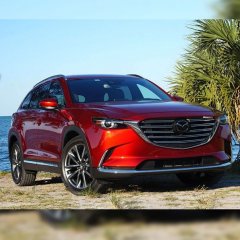
Driving set to get more troublesome in Singapore with more
Ragingbull posted a blog entry in MyAutoBlog
[extract] On top of the bus only green lights, normal and full-day bus lanes and the pilot to test the proposed- 10 comments
-
- lta
- land transport authority
-
(and 1 more)
Tagged with:
-
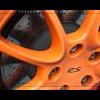
LTA actually helping drivers with its collaboration with Google
911fan posted a blog entry in MyAutoBlog
[extract] The recent announcement about the collaboration between our dear LTA and Google Maps seems to actually benefit us, the drivers and commuters. Not sure of what we-
- google singapore
-
(and 5 more)
Tagged with:


